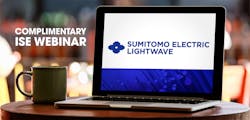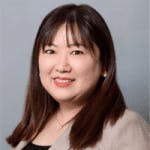Webinar Date/Time: Wednesday, June 9, 2021 at 1:00 PM (CT)
Earn 1 BICSI CEC When You Attend the Live Webinar
At the beginning of the pandemic, many projects were delayed because we had no idea how to protect ourselves from COVID-19. The more we learned about this virus, the more we found that social distancing is an important way to reduce the risk of getting the virus. Keeping projects going during the pandemic was very challenging, but necessary because the optical fiber network supports our everyday lives.
During the pandemic, many businesses and schools shifted their operations to working online. The optical fiber network supports our lifelines and education that keeps us connected to people/customers outside the house (or work) without traveling. Telecommunication network enhancement and optical fiber expansion became more important in many businesses, thus, many contractors across the world are working as essential workers to install optical fiber networks, even during the pandemic.
Air Blown Fiber technology uses blowing equipment to install fiber bundles through pathways. With Future FLEX ABF, a 3,000 foot installation can be completed with only 2 people in 30 minutes. And, of course, installers at the site are socially-distanced. Not only a fast and safe socially-distanced installation, but also a single fiber blow will cover all types of spaces (such as outdoor, plenum, and riser) without having any fusion splices in the middle. The Future FLEX ABF system has a variety of tube cable types with ratings (OSP, Plenum, Riser, Low Shrink, and LSHF) that the installer selects for the space. Every time the space environment changes, use a tube distribution unit (TDU) to create a tube cable splice point to connect the different rate tube cables to one path.
Connecting different types of tube cables to one path allows the fiber bundle to travel all the way from the starting point to the destination point without disruption. Therefore, only 2 installers can complete a fiber bundle installation in multiple spaces with one single blow.
Another advantage of ABF is the minimum disruption installation. Essential services, such as hospitals and transportation facilities, must remain open to maintain operations during the pandemic, but some require optical network expansion to support or improve the demand. With ABF, there is no disruption in business. The fiber bundles travel to pathways using blowing equipment, so physical access requirement is only at the blowing point and the destination point, and only one person in each location. There is no need of sharing a space with other installers nor heavy equipment that requires multiple people to set up. Installers usually stay in a communication room when indoors. Therefore, no risk of exposing themselves to COVID-19.
Future FLEX blowing equipment does not require electricity to operate, yet still powerful enough to blow fiber bundles at a long distance. Performance is dependent on the type of tube cable and the size of the fiber bundle. Many ABF installations were completed during the pandemic by providing a solution to complete optical fiber installation while keeping socially distant.
In this presentation, attendees will learn how Fiber installation has been beneficial during the pandemic. The precautions that are taken to install fiber cables and bundles will be discussed. A question and answer session will follow the presentation.
Register Here to View the Recorded Webinar
Presented by:
Product Manager
Sumitomo Electric Lightwave Yuko Agano is the Product Manager of FutureFLEX Air Blown Fiber for Sumitomo Electric Lighwawave (SEL). Yuko was born and raised in Japan and moved to the United States when she was 19 years old to receive a higher education. Upon completion of her Bachelor of Science from Embry Riddle Aeronautical University and Master of Business Administration from University of Phoenix, she returned to Japan and worked as a U.S. government contractor and Japanese government employee at a U.S. military installation in Japan for over five years supporting military operations. Yuko returned to U.S. in 2014 to work for Sumitomo subsidiary, Innovation Core SEI, in Silicon Valley to research into next generation technologies. In 2018, Yuko relocated to North Carolina and joined SEL in her current role.
We are the provider for the industry’s fast, most reliable, and advanced fiber optic technology and solutions. Catering to today’s most well-known optical fiber outside plant and indoor plant deployments, we are committed to not only our shareholders, but our customers. We value providing a high quality customer service experience, designed to meet and tailor to the customer’s desired product solution needs.
Since 1983, Sumitomo Electric Lightwave is committed to producing the finest high-speed quality of fiber optic technology innovations.


